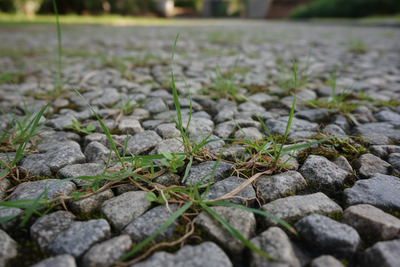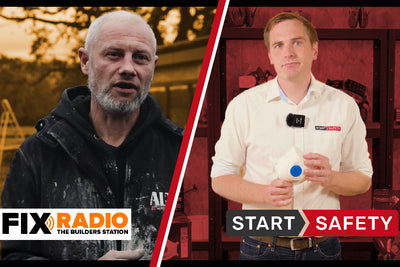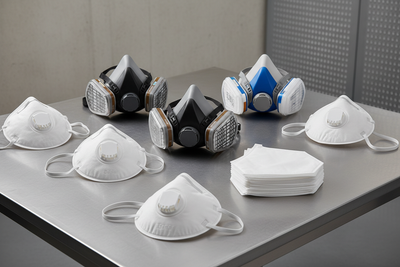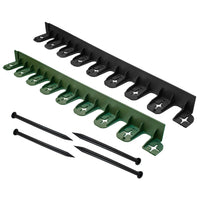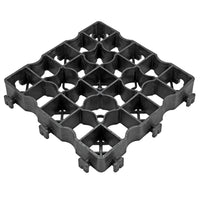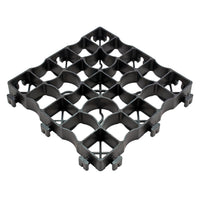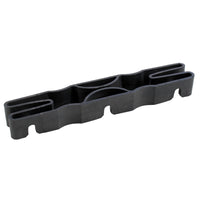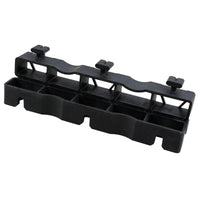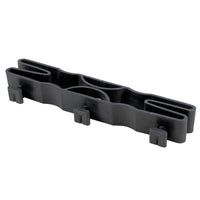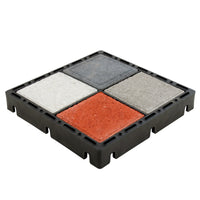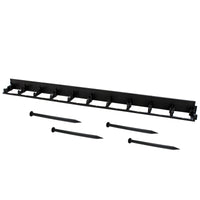How To Border a Gravel Driveway
A cleanly defined border to any element in a garden or landscaping design can be the finishing touch that takes a project from looking good to great. Additionally, without a defined border, it's only a matter of time before things start to look scruffy. This is especially true for gravel areas, as gravel has a natural tendency to disperse into surrounding areas if not properly contained and maintained.
With the above in mind, we have put this article together to cover what the best options are for bordering a gravel driveway to keep your gravel contained, and also keep surrounding elements out of the gravel, such as grass and soil, which can be equally invasive and cause clean-cut boundaries to dissolve and soften eventually.
Before edging your driveway, you need to decide what system you wish to use. Many factors, including costs, practicality and aesthetics, will influence this. Below, we have listed some of the most common gravel driveway border systems, along with their pros and cons.

Plastic Driveway Edging
Plastic lawn and driveway edging systems are highly cost-effective and among the easiest to install. Quality systems, such as our interlocking lawn edging, can be used to create both curved and straight edging with minimal effort. Each section links into the next, allowing you to create a continuous boundary with ease. Plastic pins are used to secure the edging in position.
Pros:
- Price - One of the cheapest systems on the market.
- Weatherproof - Will not rot when exposed to rain and moisture.
- Easy to install—can be used for straight and curved installations.
- Suitable for DIY installation - Requires no specialist tools and can be installed with only a hacksaw, a spade, and a rubber mallet.
- Supplied in Different Heights - Can be supplied in various sizes to suit the height of your driveway pavers or the depth of gravel adjacent to it.
Cons:
- Deformation - Can deform if subjected to heavy loading, such as vehicles parking on top of the edging for a prolonged period of time.
- UV Degradation - Our product is UV-stabilised, but other brands can sometimes deteriorate and become brittle when subjected to sunlight.
Other notes and considerations:
Not all plastic driveway edging systems are created equal; some are very thin and can be hard to shape and use to create straight lines.

Aluminium Driveway Edging
Modern aluminium edging systems are very durable and are nearly as easy to install as the plastic variants we offer. They come in longer lengths and are therefore easier to create straighter sections.
Pros:
- Premium Finish - Looks great and gives a crisp silver line between top dressings when installed.
- Cost-effective - Although more expensive than plastic edging, it remains relatively cost-effective compared to other alternatives.
- Easy to install - Fish plates help sections lock together, and aluminium pins hold the edging in place.
- Suitable for DIY installation - Can be installed by a competent DIY installer, with no specialist tools.
- Multiple Sizes - Available in various sizes to accommodate the height of your driveway, gravel pavers or the depth of gravel adjacent to them.
Cons:
- Relatively Soft - Although considerably stronger than plastic, aluminium can be dented or bent easily if you are not careful during installation.
- Limited Finishes - Our aluminium edging is only available in a plain, self-oxidised coating, which may not suit every design aesthetic.
- Corrosion - Salty or very acidic soils can cause aluminium to oxidise and corrode quickly.
Steel Driveway Edging
This traditional edging system can be used to create graceful curves and strong boundaries between lawn and gravel elements, as well as flower beds. It is very hard-wearing and is often left in a plain or intentionally rusted finish, which is self-protecting; this is often referred to as corten steel.
Pros:
- Premium Finish - Steel edging has long been seen as a premium finish and a sign of quality.
- Very Durable - Steel driveway edging will stand up to cars driving over it, foot traffic, strimmers and everything in between.
- Clean lines - The fine line that this product carves between two different surface dressings can be shaped with graceful curves that flow naturally or a razor-straight line without complication.
- Low maintenance - Once installed, steel edging systems require little ongoing maintenance.
Cons:
- Installation cost - Installation costs for steel lawn edging are often far higher than those of alternative systems.
- Not suitable for DIY Installation - Cutting and forming bends in steel lawn edging can require tools not accessible to the average DIY installer.
Concrete Edging Stones
Concrete lawn edging stones are the go-to for driveway and pathway edging when new homes are built. They are a solid choice, but like most other systems, they have their pros and cons, the most significant being the equipment and skills needed to install them properly.
Pros:
- Tough - Once installed properly, concrete edging stones can last for years with little maintenance.
- Choice of Designs - Many styles available, from flush basic stones to ornate rope-top styles.
Cons:
- Can Chip - Repairs can be hard to make seamless.
- Disruptive Installation - Requires a deep foundation and concrete bed.
- Can Crack - Ground movement can cause separation or cracking.
- Staining - Can stain from natural deposits and growths.
- Hard to Form Curves - Usually only available in straight sections.
Block Pavers
Separating two surfaces, such as gravel and grass, can be easily achieved with a solid course of block pavers placed perpendicular to the gravel edge.
Pros:
- Flexible Installation - Easy to form straight and curved sections by adjusting each block.
- Choice of Styles - Hundreds of colours available.
- Durable - Hard-wearing once installed.
- DIY Achievable - Requires moderate DIY skill.
Cons:
- Grass & Weed Infiltration - Joints can allow roots and weeds through.
- Can Settle Over Time - Blocks may sink with repeated traffic.
- High Installation Cost - Labour-intensive for professionals.
Wooden Sleepers
Reclaimed or new wooden sleepers offer a natural aesthetic and are commonly used as driveway and pathway edging.
Pros:
- Natural Aesthetic - Warm look that suits many settings.
- Durable - Can withstand knocks.
- Choice of Installation Methods - Can be installed vertically or horizontally.
- Cost-effective - Depending on sleeper type.
- DIY Achievable - Suitable for competent DIYers.
Cons:
- Can Be Susceptible to Rot - Organic material in wet soil environments.
- Requires Maintenance - Needs regular treatment against insects and fungus.
- Contamination Risk (Reclaimed) - May contain chemicals like creosote.
With so many options available, the best edging system depends on your priorities—cost, aesthetics, durability, and ease of installation. If you need help choosing, our customer service team is always available to assist by phone or email.
- Author

